CSI: Sea Turtle Edition
Never have I felt so responsible for the delicate nature of life than I did when I had the opportunity to release a sea turtle hatchling into the wild. These day old hatchlings were recovered from the beaches of Nuevo Vallarta, Mexico as eggs and incubated and hatched by a rescue team to ensure that they had the best chance of survival. This conservation of hatchlings is crucial for their survival, protecting them from predators and destructive beachgoers. It’s a rare and beautiful gift to not only usher new life into the world, but to have that life be one of a species whose population is endangered.
After hatching and finding their way into the ocean, the first great hurdle of their lives, sea turtles will mature into juveniles and travel vast distances in the search for food. While many of us envision sea turtles in the warm, highly biodiverse marine ecosystems of the tropics, 5,000-20,000 sea turtles (predominantly loggerhead sea turtles, Caretta caretta) migrate into the coastal waters of our “backyards” every summer. The Chesapeake Bay is a significant foraging and developmental habitat for juvenile turtles, many of whom migrate into the bay annually from offshore wintering grounds. Unfortunately, these sheltered waters do not completely protect them from unknown threats that are stranding between 100 and 300 turtles on local beaches every year. So why should anyone care about this endangered species? Removing keystone species like sea turtles can completely alter a delicately balanced ecosystem. While the direct cause of many strandings is still unknown it is possible that both environmental and human factors are contributing, which is why scientists are currently working to evaluate the impacts of habitat loss, climate change, and interaction with fisheries. For animals with a long life span and late maturity, such a high juvenile mortality rate is detrimental to population growth as it reduces the number of turtles that survive to lay eggs of their own. Fortunately, this is a problem that has not gone unnoticed. Bianca Santos is a second year graduate students at VIMS who is trying to solve the mystery of declining sea turtle populations by starting at the scene of the crime.
Reviving an area of research that has been absent from the VIMS campus in recent years, Bianca is creatively addressing critical conservation questions regarding where sea turtle mortalities are occurring in the Bay to determine possible causes. Using an approach that could easily be confused with a recent episode of CSI, she is retracing the routes stranded turtles travel using stranding data, computer models, and field drift experiments.
Working with the Virginia Aquarium and Marine Science Center Foundation Stranding Response Program (VAQS), the first clue that Bianca has to work with is VAQS’ large dataset detailing the turtle stranding events that occur around the Bay each year. One of the first pieces of information Bianca is interested in is how long turtles drift in the water after death and before washing up on shore. When the VAQS team responses to turtle strandings, one of the pieces of information they gather is a “condition code” based on how decomposed the animal appears. To help estimate when the turtle potentially died at sea, Bianca has been conducting decay studies to associate condition codes with a time component. After determining how long ago death occurred for stranded turtles, the next step in her project is to determine where at-sea these turtle carcasses originated. Upon death, turtles will passively drift in the water, and their movements will depend on physical processes such as currents, winds, and tides. Bianca is studying how these factors affect how a turtle floats through the Bay after death and before stranding on beaches. She is creating drift simulations using a tool called Ichthyop which allows her to virtually release particles throughout the Bay to determine how physical forces move the particles (which represent the passive drift of turtle carcasses) and where they end up when they become stranded. Bianca will then dig deeper into the investigation by releasing three different types of surface drifters to physically model the drift trajectories predicted by the model. These include artificial drifters – buckets with a satellite tag attached; simulated drifters – wooden turtles designed by the Northeast Fisheries Science Center in Woods Hole; and true turtle carcasses which have been carefully recovered and situated with a satellite tag before being re-released into the Bay. The combination of all these pieces of evidence from both her computer and physical models will bring Bianca closer to solving the conservation mystery of turtle mortalities in the Bay.
Bianca’s investigation into Bay sea turtle mortality is still in the early phases, but the implications of her findings have already made a big impression among the VIMS and W&M communities. Last year, she was a Green Fee recipient, receiving sustainability aimed research funds that allowed her to begin the initial phases of her research. She then swept the floor at the VIMS Three Minute Thesis competition where she won over the audience with her CSI approach to sea turtle conservation.This semester she is also involving local schools in her research. Through VIMS’ GK-12 Program, Bianca takes her research into 7th grade life science classrooms at Page Middle School and works with students on the “Crime Scene Investigation” of sea turtle strandings in the Bay. She has also brought GK-12 partner teachers into the field to aid in her field work. Through this research, Bianca is not only educating the next generation on sea turtle conservation, but hopes to advise Chesapeake Bay authorities on management decisions and the importance of sea turtle conservation.
Be a Conservation Crusader
While research like Bianca’s is paving the way for a society more aware of sustainability, there are actions that you can take to be a part of the change. As October is National Seafood Month, try getting in the habit of eating sustainably caught seafood – seafood that has been caught considering the long term viability of species and marine communities. Need some help getting started? Check out Seafood Watch to find out what kinds of fish are healthiest for you and our oceans. As our actions on land can directly impact the health of marine environments, it is important to recycle and responsibly dispose of trash. Plastic bags and other garbage items are easily mistaken for food by sea turtles, choking them or making them seriously sick. You can also contact VAQS, who has been responding to strandings since 1987, to report strandings or become involved in their volunteer stranding response program. To learn more about Bianca’s work, keep an eye out for her talk during the 10:25am of the breakout sessions at William & Mary’s Sustainability Summit on November 7th. No mystery is left unsolved in the world of science and the more we investigate, the closer we come to understanding how our actions affect the world in which we live.
If you are interested in learning more about Bianca’s work or getting involved in sea turtle sustainability, you can email her at bsantos@vims.edu.
Still interested in learning more?!? Check out some of the great work being lead by VIMS alumni Kate Mansfield at the University of Central Florida’s – Marine Turtle Research Group.

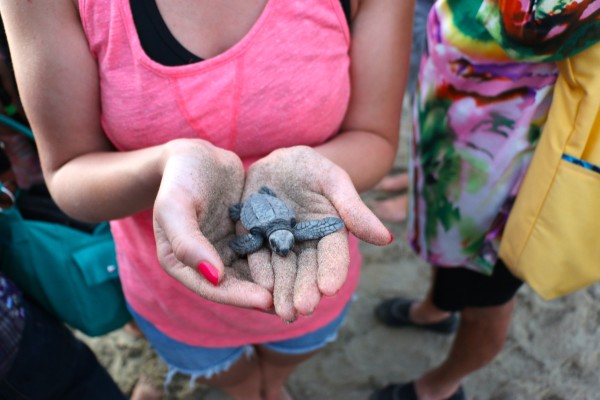
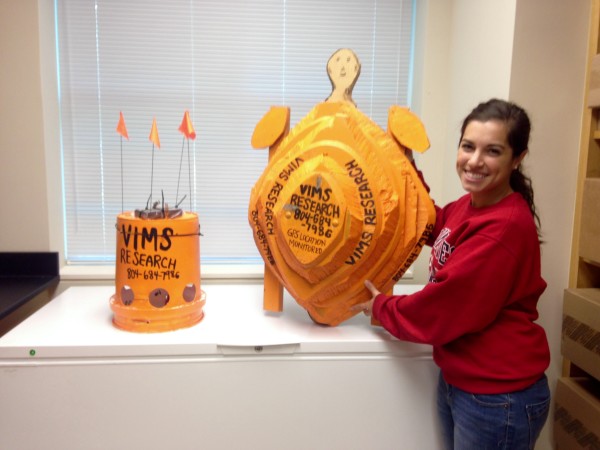
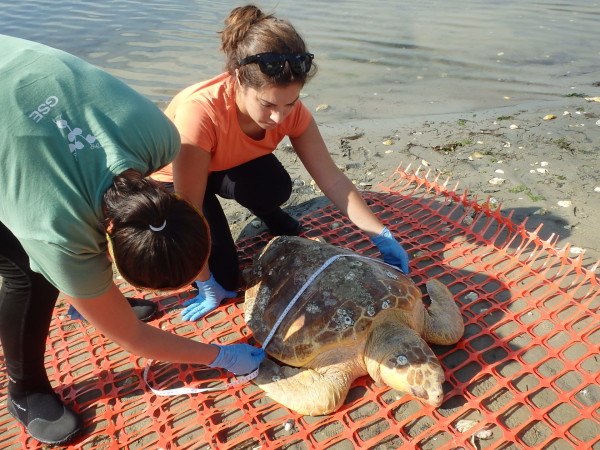
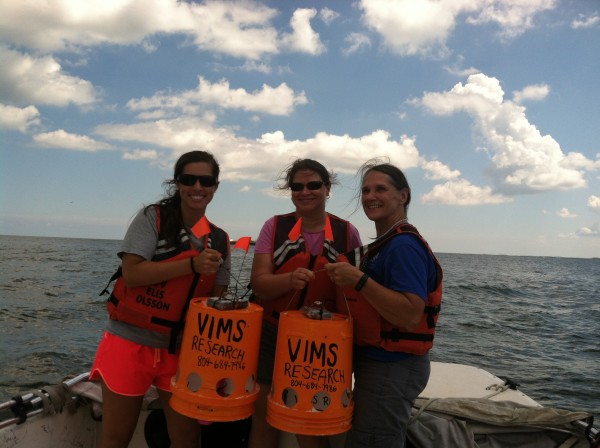
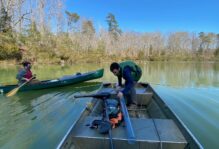

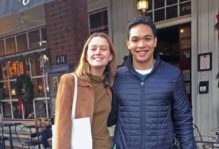
No comments.
Comments are currently closed. Comments are closed on all posts older than one year, and for those in our archive.